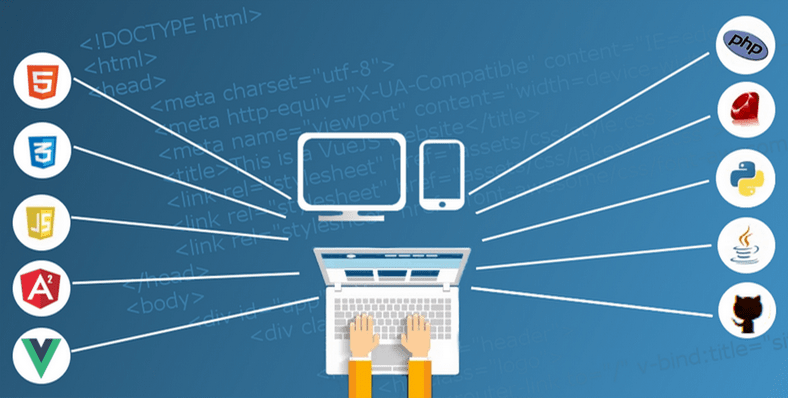Every website development has two essential parts: front end and back end. These are the terms that describe different task areas. The front end is well-known as a client-side part of a website and is sometimes referred to as “web design”. On the other hand, the back end is a server-side part, the “brain” of the website. Full stack is the third term. It stands for the combination of the front and back end within the website. In this article, we’ll highlight the differences between these three terms and ranges of their use.
Front End
The front end is all about client side of an application. This term includes visual design, GUI (Graphical User Interface) and tools to reach a decent level of user-friendliness. They are required to achieve great UX (User Experience). It’s also about some languages like HTML, CSS and sometimes JavaScript.
Some people think that front end developers are only web designers. It’s not totally accurate. Web design is only a part of the front end. Web designers develop the appearance of a website, its color scheme, content orientation, responsive design, etc. UI (User Interface) designers develop a convenient, logical and easy-to-use website interface. UX designers try to understand how the website’s layout appeals to its users, what they like and what they don’t in the visual design or interface. All these are part of the front end. Generally, the main goal of client-side tasks is to create an exceptional, eye-catching appearance that will retain users’ attention as long as possible and will boost the website’s profit.
Back End
On the other hand, back end stands for the server-side part of the application. It’s all about internal methods implementation, program structure, database logic, etc. Back end specialists develop, update, and maintain a website; make various internal changes. The back end is essential for creating a dynamic website such as Google Maps, Facebook, various blogs, e-commerce stores, etc. A dynamic website is a type of web resource that has the functionality to upload/download files or personal information, perform real-time tracking, implement online maps, purchase or book items, etc. Plain front end website can’t handle those tasks because they require lower level implementations like databases and various APIs (Application Programming Interface). In other words, the front end keeps everything fancy; the back end makes all these things work.
Full Stack
This approach combines both the front and back end. A full stack developer is responsible for creating and maintaining both the client and server sides of an application. Such an approach provides a complete cycle of development, from creating visual design and user interface to database handling, website security, and other back end functionality. This is a great solution for a major development team. In such type of work process, all code and logic belong to one single company. Thus, the full stack simplifies project maintaining, debugging, and merging separate modules.
Every website consists of both the back and front end logic and tools. The front end provides all visuals and user interface. The back end defines how the website works. These approaches are a part of the full stack development. Full stack developers are responsible for both client and server sides, so they can create an exceptional website for any purpose.
The front end and the back end combined are essential for creating a high-quality site. There are websites that implement only the front end. Such products aren’t suitable for more complex tasks than maintaining a simple overview webpage. Sites that implement only server-side logic are hard to use and don’t have a proper design to provide positive UX. Thus, the full stack seems to be the best option.

